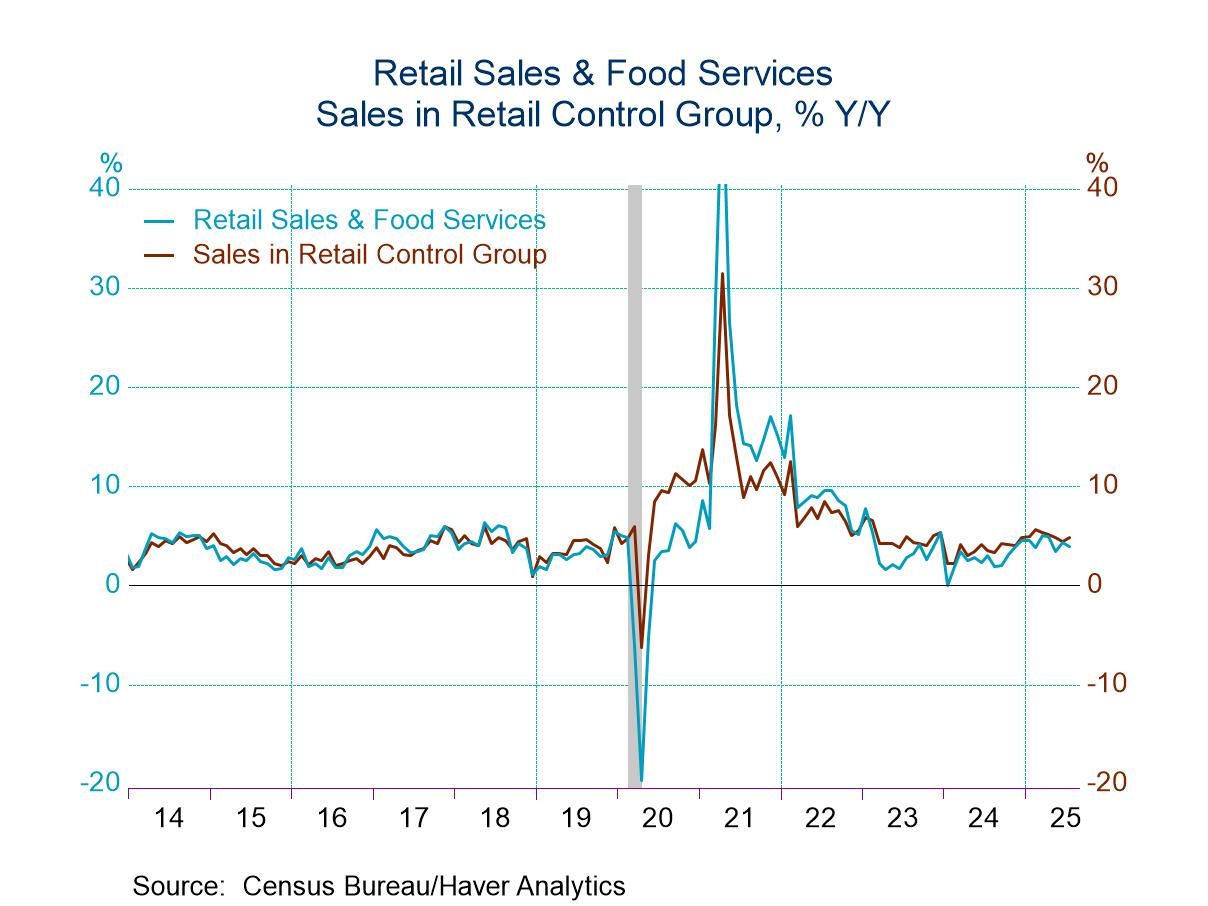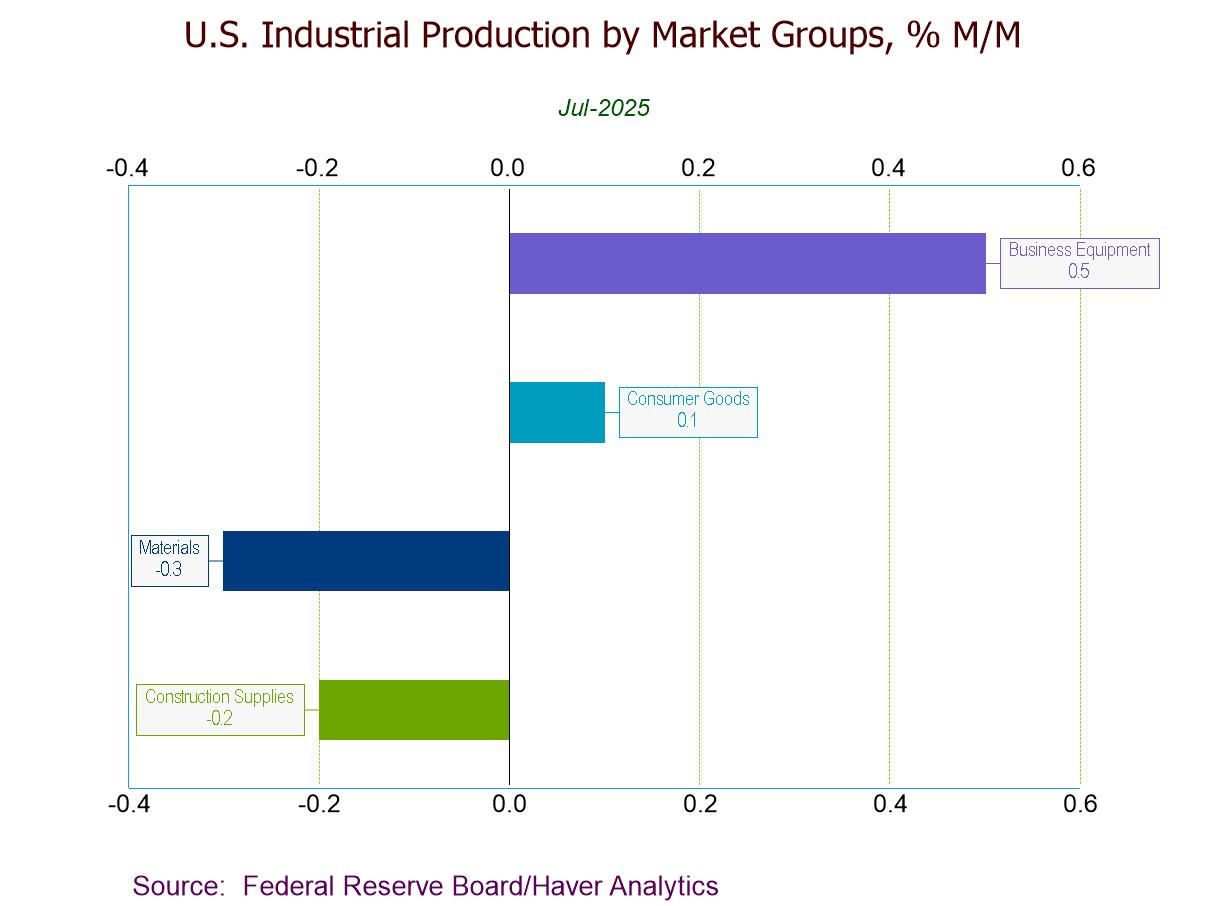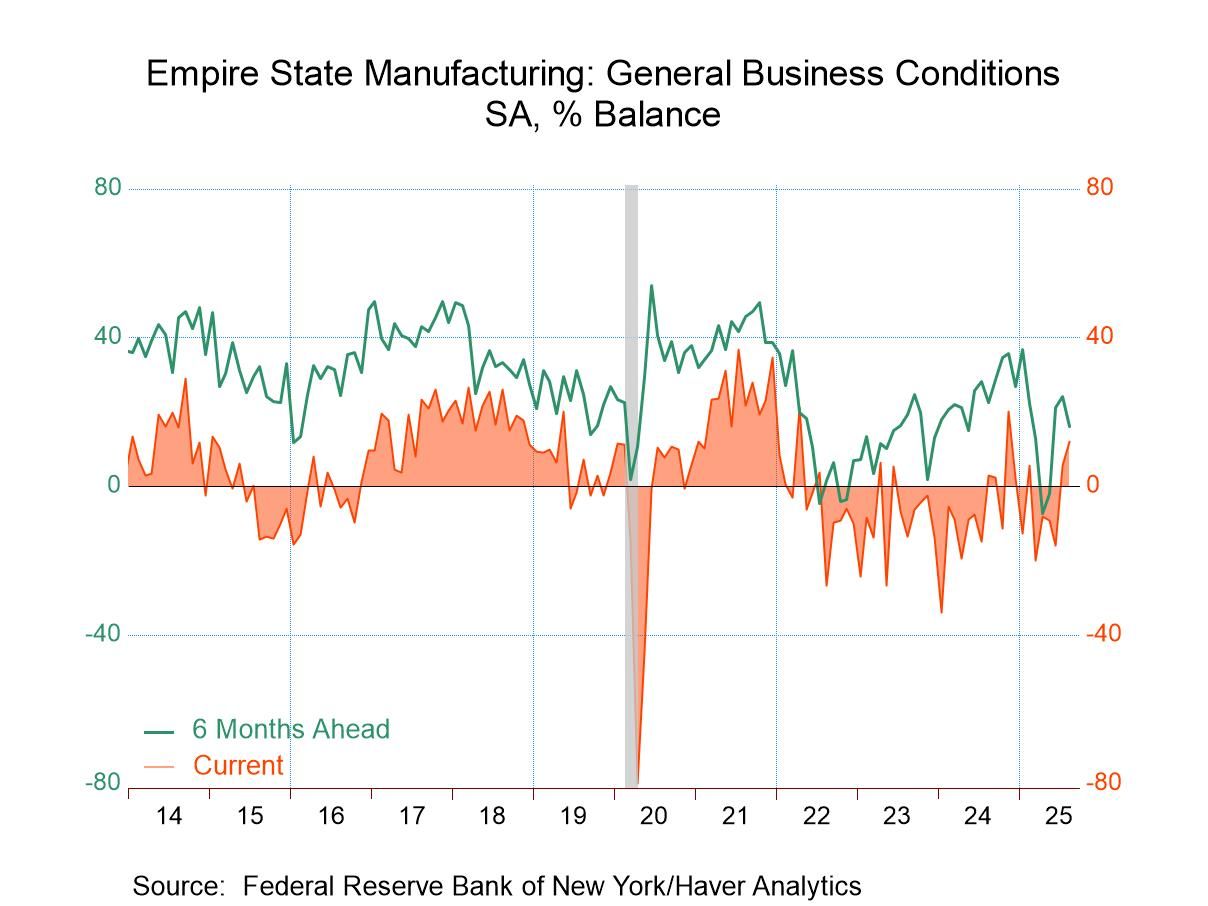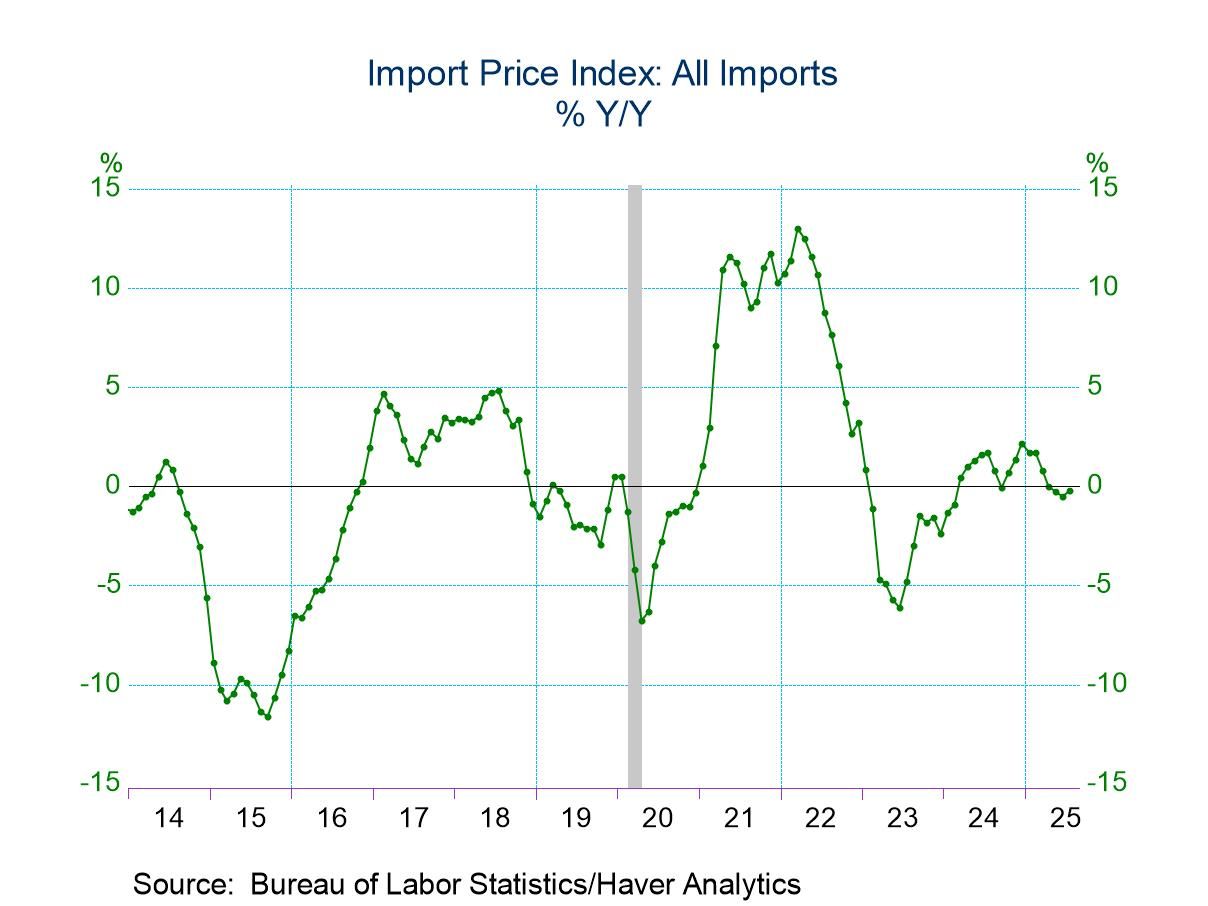 Global| May 05 2011
Global| May 05 2011German Orders Growth Begins to Wither
Summary
Has the slippage down that famous slippery slope begun for German orders? Orders plummeted by 4% in March. But they have risen by 3.1% in January and by 1.9% in February and so they remain higher for the quarter on balance. Still the [...]
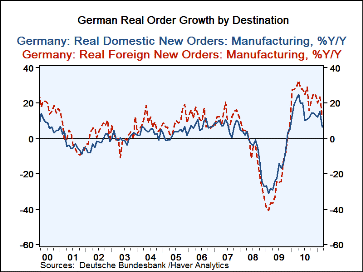 Has the slippage down that famous slippery slope begun for German orders? Orders plummeted by 4% in March. But they have risen by 3.1% in
January and by 1.9% in February and so they remain higher for the quarter on balance. Still the sequential growth rates tell a tale of slowing
momentum.
Has the slippage down that famous slippery slope begun for German orders? Orders plummeted by 4% in March. But they have risen by 3.1% in
January and by 1.9% in February and so they remain higher for the quarter on balance. Still the sequential growth rates tell a tale of slowing
momentum.
German domestic orders have had, contrarily a bit of revival. They still fell by 3.5% in March. But they were so much stronger in January and in February that they are up at a 13% annual rate over three-months and have accelerated past their 6-mo and 12-mo rates of growth. But even with this the Yr/Yr growth rates for domestic orders are in the grip of a downtrend. The loss of momentum right now is more severe for foreign orders where three-month growth has turned negative.
Germany has lost the steady underpinning for capital goods sector expansion as real sector sales for capital goods are negative over three-months as well as over six-months. Intermediate goods sales and sales of durable consumer goods remain strong, but for consumer nondurables, spending is weakening and for capital goods the weakness has set in full bore, leading to declines.
Still for 2011 Q1 Germany will sport good numbers overall as orders are up at a 9.6% annual rate (Q/Q) led by a 13.8% increase in domestic orders. Real mining and MFG sales are up at a pace of 2.8% in Q1. Still capital goods real sales are lower by 4.8% at an annual rate. There are signs even in the quarterly report of Germany losing some of the basis for its strength. Meanwhile, the rise of the euro is inexorable. But for now the ECB has paused in its rate hiking ways.
This weakness in Germany comes as the US has hit a flat spot and as readings for the service sector have backtracked for EMU, the UK and the US; Germany’s own services sector has not been spared this weakness. The extent of this slowing is at this time unknown but seems to be broadening and gathering momentum.
| German Orders and Sales By Sector and Origin | ||||||||
|---|---|---|---|---|---|---|---|---|
| Real and SA | % M/M | % SAAR | ||||||
| Mar-11 | Feb-11 | Jan-11 | 3Mo | 6Mo | 12Mo | YrAgo | QTR-2-Date | |
| Total Orders | -4.0% | 1.9% | 3.1% | 3.7% | 5.2% | 9.8% | 25.5% | 9.6% |
| Foreign | -4.3% | 1.8% | 1.7% | -3.7% | 6.6% | 12.5% | 28.5% | 5.9% |
| Domestic | -3.5% | 2.1% | 4.7% | 13.3% | 3.2% | 6.5% | 22.2% | 13.8% |
| Real Sector Sales | ||||||||
| MFG/Mining | 0.7% | 0.7% | -0.2% | 4.6% | 3.8% | 10.0% | 9.0% | 2.8% |
| Consumer | 2.0% | 1.7% | -2.2% | 5.9% | 5.5% | 2.0% | 2.8% | 0.0% |
| Cons Durables | 4.3% | -1.0% | 2.7% | 26.0% | 6.7% | 11.2% | 5.2% | 7.3% |
| Cons Non-Durable | 1.5% | 2.3% | -3.1% | 2.5% | 5.1% | 0.4% | 2.4% | -1.5% |
| Capital Gds | 0.8% | -1.3% | -1.9% | -9.0% | -0.4% | 12.3% | 7.2% | -4.8% |
| Intermediate Gds | 0.1% | 2.3% | 2.8% | 22.5% | 9.9% | 12.3% | 16.1% | 15.6% |
| All MFG-Sales | 0.7% | 0.6% | -0.1% | 5.0% | 4.0% | 10.1% | 9.1% | 3.0% |
Robert Brusca
AuthorMore in Author Profile »Robert A. Brusca is Chief Economist of Fact and Opinion Economics, a consulting firm he founded in Manhattan. He has been an economist on Wall Street for over 25 years. He has visited central banking and large institutional clients in over 30 countries in his career as an economist. Mr. Brusca was a Divisional Research Chief at the Federal Reserve Bank of NY (Chief of the International Financial markets Division), a Fed Watcher at Irving Trust and Chief Economist at Nikko Securities International. He is widely quoted and appears in various media. Mr. Brusca holds an MA and Ph.D. in economics from Michigan State University and a BA in Economics from the University of Michigan. His research pursues his strong interests in non aligned policy economics as well as international economics. FAO Economics’ research targets investors to assist them in making better investment decisions in stocks, bonds and in a variety of international assets. The company does not manage money and has no conflicts in giving economic advice.



